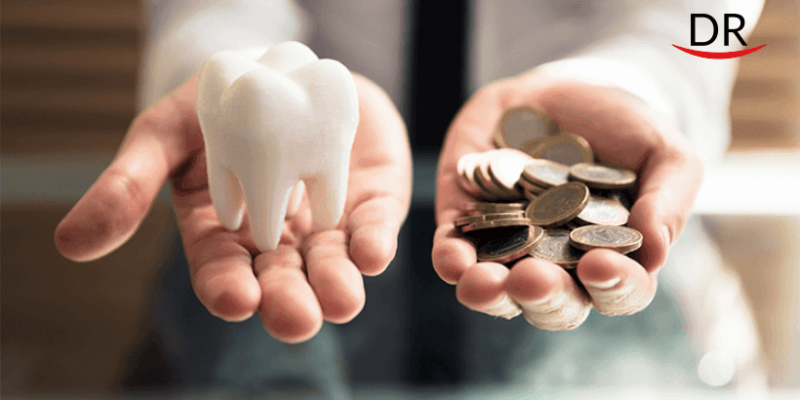Introduction:
The pandemic crisis of β-coronavirus (2019-nCoV) originated in China and has become a major public health disaster not only for China but for all countries on the globe. 2019-nCoV causes severe pulmonary condition and even fatal pneumonia. The cross-infection risk is high between dental practitioners and patients due to the unique situation of dental procedures causing the the route of infection transmission through air-droplet of cough or sneeze, droplet inhalation transmission, and contact of oral, nasal, and orbital mucous membranes.
Symptoms of COVID 19:
Primarily, people exhibit
- Fever
- Cough
- Shortness of breath
Some also exhibit:
- Loss of taste
- Loss of smell
- Chest pain
About 15% to 25% of 2019-nCoV patients have severe conditions and their chest CT showed bilateral pneumonia, with ground-glass opacity and bilateral patchy shadows which are the most common patterns.
Incubation period
The incubation period of asymptomatic 2019-nCoV had been estimated as an average of 5 to 6 days, but there is current evidence that it could be up to 14-days or more, which is considered now as the adopted duration for medical quarantine.
Route of transmission of 2019-nCOV in dental clinics
- Use of high-speed hand pieces or ultrasonic instruments in dental patients with a cough or a sneeze can drive their saliva, secretions, or blood to aerosolize to the surroundings.
- Infections can also occur through the puncture of sharp instruments or direct contact between mucous membranes, contaminated hands or indirect contact with contaminated instruments and surfaces which can persist on surfaces up to two days.
Steps to be taken for treatment of patient in the dental clinic:
1. Identify a suspected case of COVID- 19
The dentist should be able to able to identify a suspected case of 2019-nCoV through precheck triage clinic to evaluate and measure the temperature of every patient as a routine procedure. The practitioner should take medical history including history of cough, shortness of breath and/or sore throat and travel history to infected area.
Once patients and their accompanying persons enter the clinic, their temperature should be measured. Any patients suffering from fever should be referred to designated hospitals.


2. Infection control in dental clinic
Hand hygiene: Proper hand washing technique should be followed.

Barrier protection for the contact areas: Complete coverage of clinical contact areas of dental chair are needed.

Disinfection and sterilization prototocol in dental clinic:
Spray machines are needed for sanitization of dental clinic.

High volume suction and HEPA filters are required for proper cleaning and creating vacuum that traps about 99.97% of dust.

Procedures that are undertaken in dental set up can be categorised under green, orange and red circles –
- Procedures that fall in green circle can be done
- Procedures in orange circle can be done with restrictions in dental set up while
- Procedures in red circle should not be done at all.
Green Circle – can be done safely
- Consultation
- Abscess drainage
- Excavation of caries with spoon excavator
- Temporary filling
- Complete and removable dentures
- Denture adjustment
- Hand scaling
- RCT access opening with slow speed hand piece
- Suture removal
- OPG and CBCT radiograph
- Fluoride application
- Pit and fissure sealant application
- Digital impressions
- Bioactive fillings
- Orthodontic procedures
- Aligners
- Recementation of crown and bridges
Orange Circle -must be done with strict protocols
- Minimal or no prep Maryland bridge
- Composite, fibre reinforced and bonded bridge
- Regular impressions
- Post and core
- Soft tissue laser
- Single sitting RCT with rubber dam
- Implant prosthetics
- Preformed crowns
- GIC fillings
- Teeth whitening
- Direct veneers
- Diastema closures
- Intra oral radiographs
Red Circle – should not be done.
- Crown and Bridges
- Restoration and fillings requiring aerosol
- Scaling and polishing with ultrasonics
- Implant surgeries
- Perio surgeries
- Hard tissue dis impactions
- During procedure it is recommended to use full Personal Protective Equipment (PPE), including masks, gloves, gowns, shoe covers, head covers and goggles or face-shields. It is highly recommended to protect both skin and mucosa from infected blood droplet or secretion.
- Ensure gloves removal does not cause additional hand contamination. Gloves can be removed by more than one technique (e.g., glove-in-glove or bird beak).
- Before any dental procedure the antimicrobial mouth rinse could be used to reduce the microbes’ number in the oral cavity preoperatively.
- Any procedures generating aerosol should be minimized as much as possible like using of a 3-way syringe.
- Use extra high-volume saliva ejectors along with regular suction and apply rubber-dam for isolation during dental procedure.

Investment to restart your practice

Recommendation and Conclusions
As the 2019-nCoV crisis continues to develop, the challenges faced by dental professionals are changing. The importance of effective and strict infection control remains, but that is leading to a rapid reduction in the dental procedures being offered.
Dental professionals should be ready to support the wider 2019-nCoV response by using their professional experience outside the normal range of oral and dental health activities by volunteering while keeping the fundamental need which supports community safety.
Dental professionals may be asked to provide their advice remotely where patients cannot come to a dental clinic to defer the need of proper treatment through tele consultations and online prescriptions.




















Comments